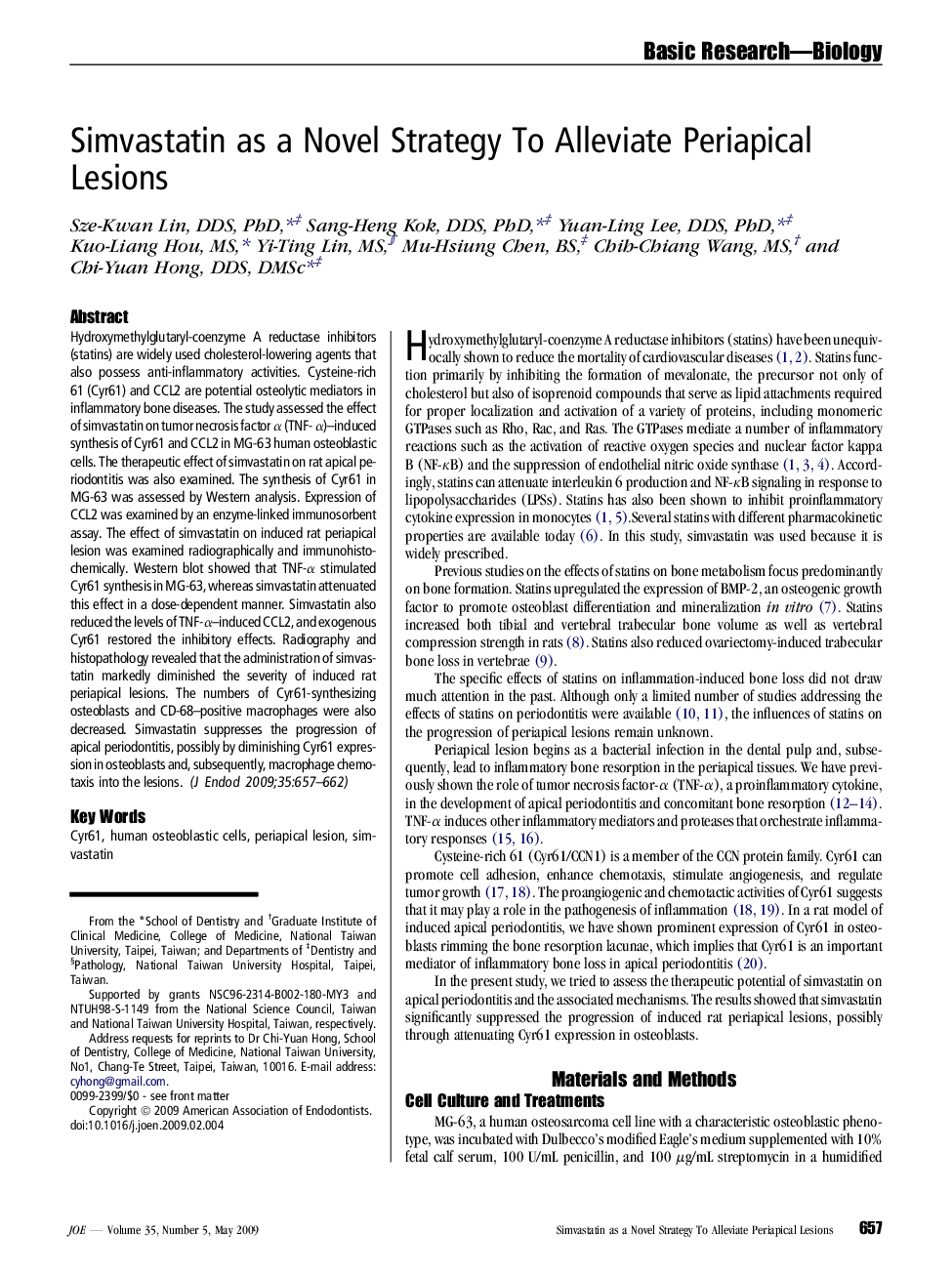| Article ID | Journal | Published Year | Pages | File Type |
|---|---|---|---|---|
| 3150682 | Journal of Endodontics | 2009 | 6 Pages |
Hydroxymethylglutaryl-coenzyme A reductase inhibitors (statins) are widely used cholesterol-lowering agents that also possess anti-inflammatory activities. Cysteine-rich 61 (Cyr61) and CCL2 are potential osteolytic mediators in inflammatory bone diseases. The study assessed the effect of simvastatin on tumor necrosis factor α (TNF- α)--induced synthesis of Cyr61 and CCL2 in MG-63 human osteoblastic cells. The therapeutic effect of simvastatin on rat apical periodontitis was also examined. The synthesis of Cyr61 in MG-63 was assessed by Western analysis. Expression of CCL2 was examined by an enzyme-linked immunosorbent assay. The effect of simvastatin on induced rat periapical lesion was examined radiographically and immunohistochemically. Western blot showed that TNF-α stimulated Cyr61 synthesis in MG-63, whereas simvastatin attenuated this effect in a dose-dependent manner. Simvastatin also reduced the levels of TNF-α–induced CCL2, and exogenous Cyr61 restored the inhibitory effects. Radiography and histopathology revealed that the administration of simvastatin markedly diminished the severity of induced rat periapical lesions. The numbers of Cyr61-synthesizing osteoblasts and CD-68–positive macrophages were also decreased. Simvastatin suppresses the progression of apical periodontitis, possibly by diminishing Cyr61 expression in osteoblasts and, subsequently, macrophage chemotaxis into the lesions.
